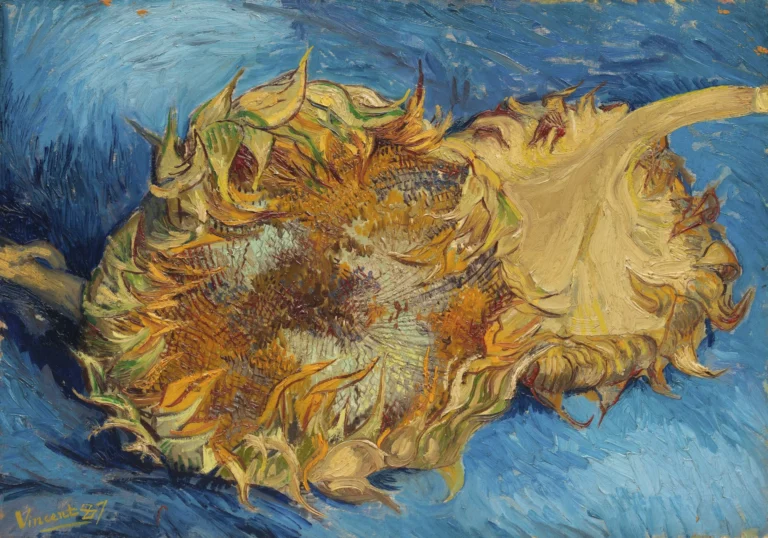Sunflowers (1888 - 1889)
Vincent van Gogh's series of sunflower paintings, crafted in the late 19th century, captures his unique artistic expression and emotional connection to the subject. Produced mainly in Arles, these works were inspired by the artist's desire to create a warm welcoming environment for his friend, Paul Gauguin. The vibrant yellow hues and thick impasto technique reflect Van Gogh's innovative approach to color and texture, ensuring their lasting impact in art history.
1888 - 1889
About the Artwork
The story behind van Gogh's sunflower series begins in Paris during the summer of 1887, where he was captivated by blooming sunflowers in the gardens of Montmartre. However, it was in Arles in 1888 that he created his most famous works of this theme. Designed to evoke a welcoming atmosphere for his friend Gauguin, these paintings symbolize friendship and the inevitability of life's cycles as they depict various stages of the sunflowers' lifespan. Van Gogh's emotional connection to the subject is evident in his explosive use of vibrant yellows and an innovative palette knife technique that results in rich textures. Through these sunflowers, he conveyed deeper philosophical reflections on existence and transient beauty, marking a pivotal moment in his artistic journey.
Did You Know
Van Gogh’s sunflowers were primarily created as a tribute to friendship, particularly his relationship with Paul Gauguin, highlighting the deep emotional connections he valued in his life and work.
The vibrant yellow hues in the sunflower paintings not only symbolize warmth and life but reflect Van Gogh’s psychological state during this period, often associated with both joy and turmoil.
Van Gogh’s sunflower paintings have inspired a myriad of artists and remain a significant influence in art history, celebrated for their bold colors and expressive style, continuing to resonate in contemporary art and culture.










